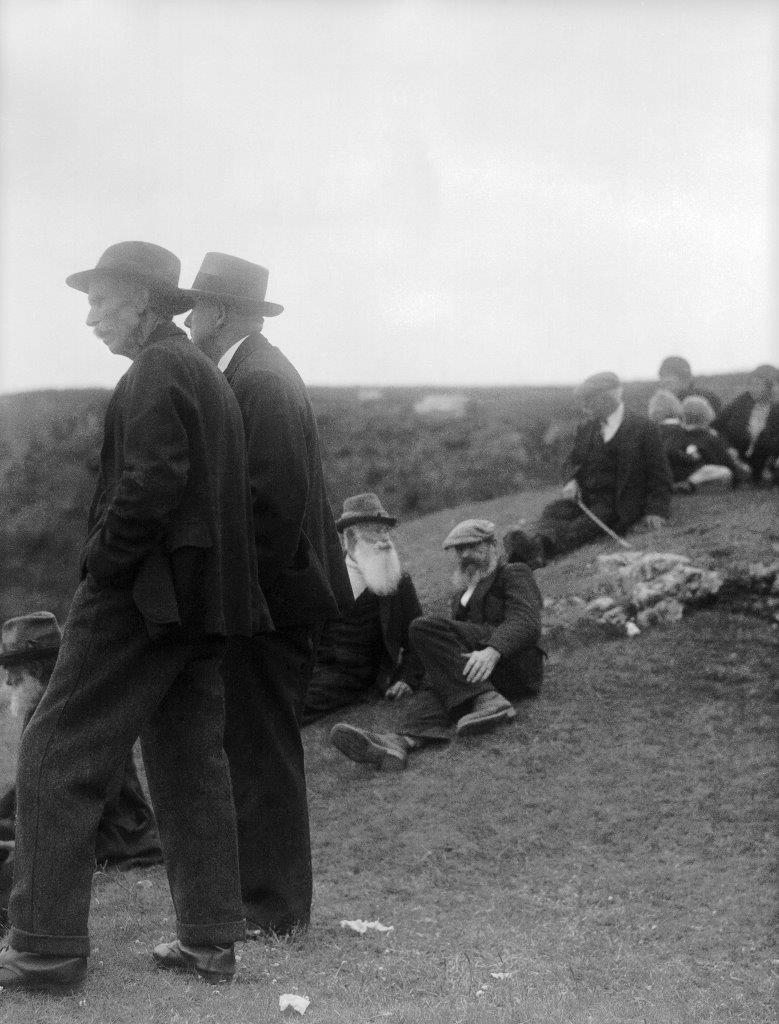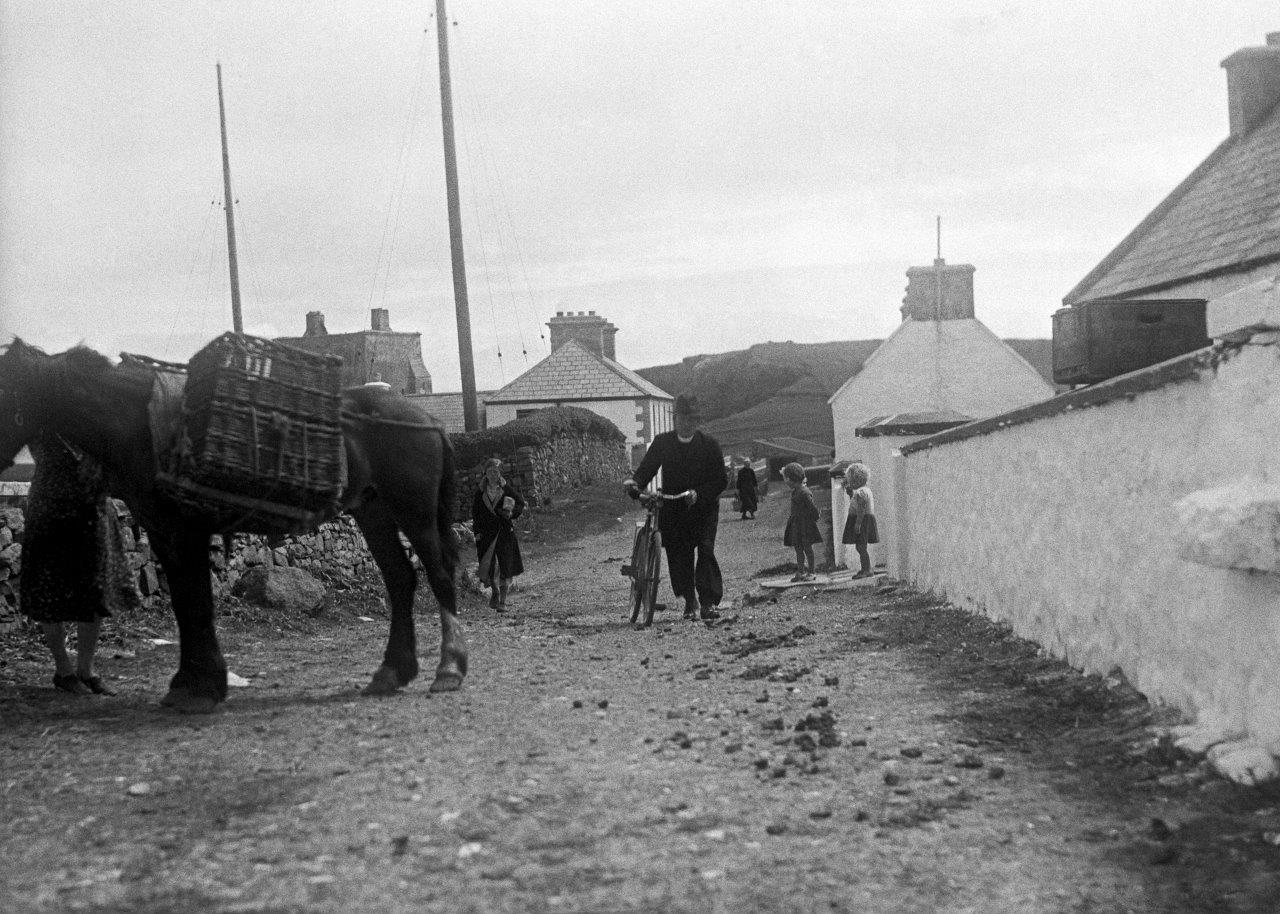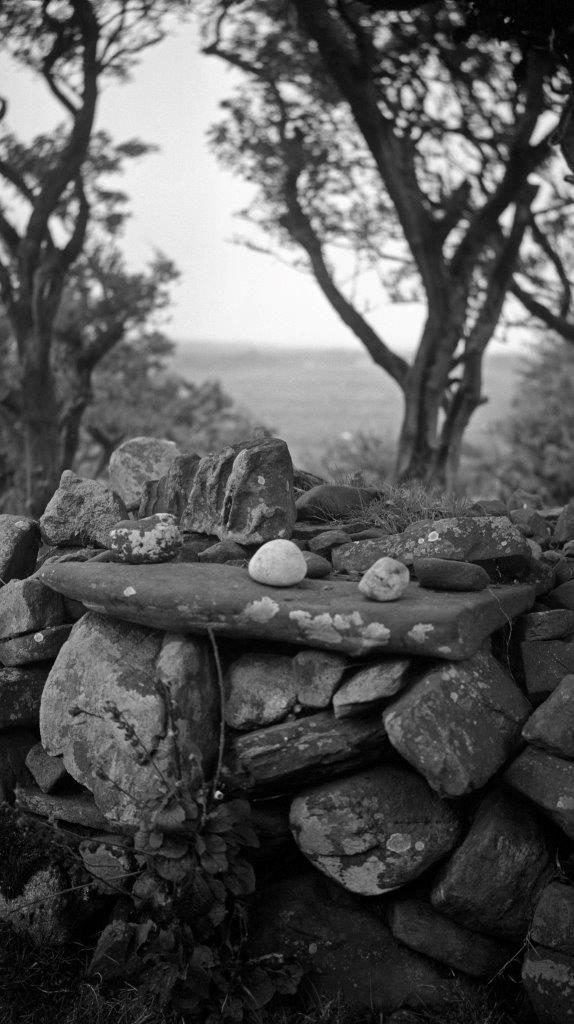In 1938, Helen and Ernie O’Malley visited Inishbofin Island just off the Galway coast. Transport to the islands was via large boat that would often carry a currach on board. If a port had no pier, the crew could lower the currach, unload the ship’s cargo and row their goods ashore. This image highlights a plank-built currach with its wooden oars and thin wood ribs inside a tar-covered shell. Once made out of stretched animal hides and now canvas, the thin skin is all that separates the fishermen from rough, cold ocean waters.
|










